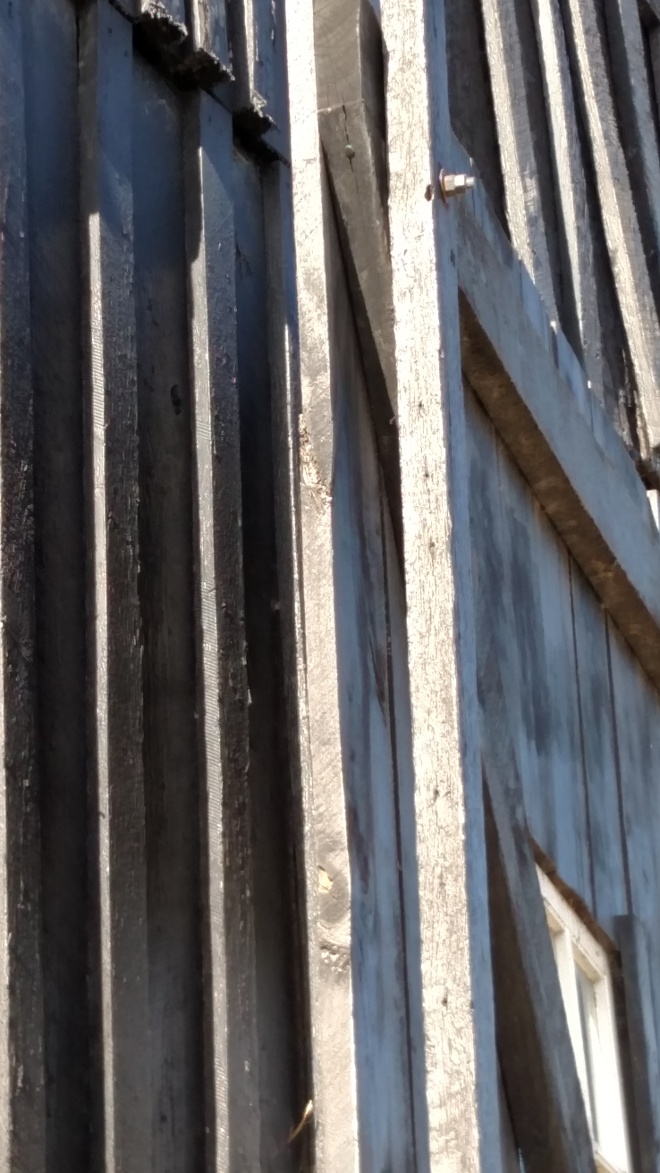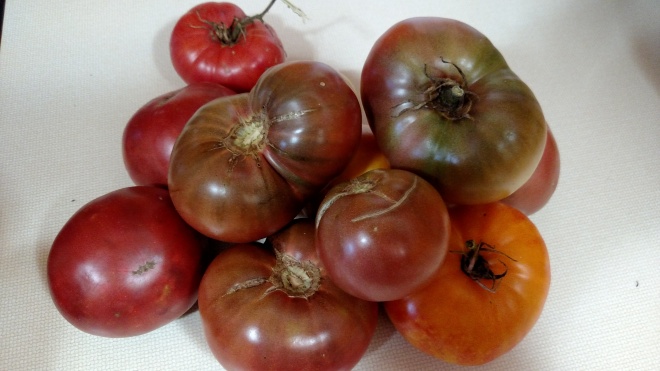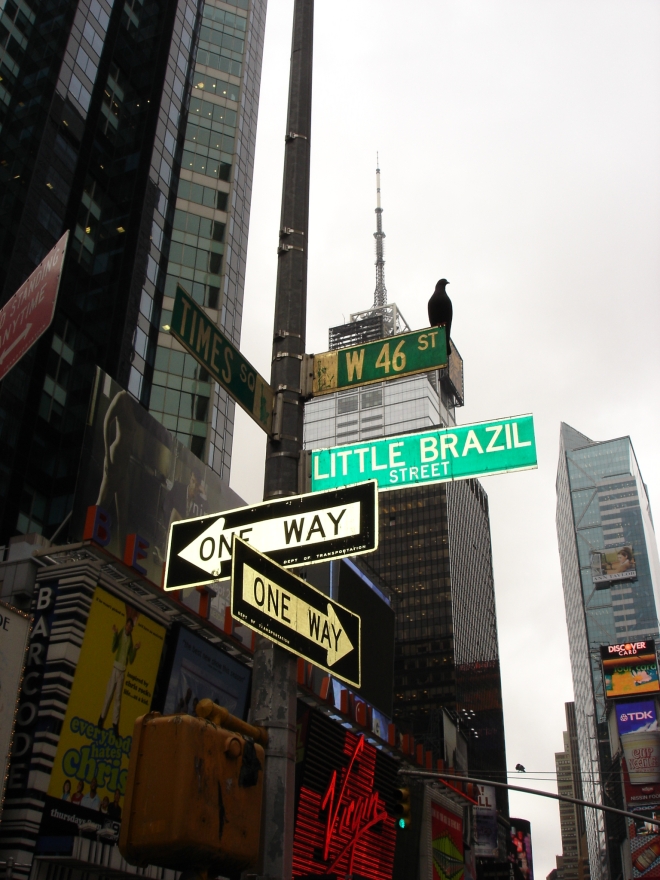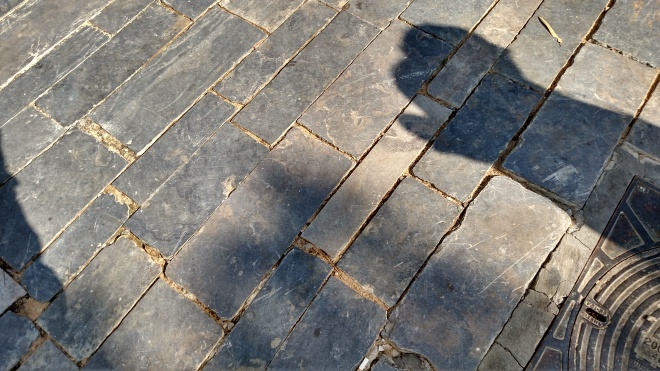
Don’t confuse me with the facts



Everyone loves a bargain. Fast fashion; wear it a few times and throw it away. Buy more. After all, if the jeans only cost $8.99 who cares if they only last a few months? The truth is there is a high cost to cheap goods.
Almost every week there are articles about factory fires in other countries, fires where workers are killed because the exits are blocked. Almost every week there are stories about people exploited in factories making fast fashion clothes, electronics, and other consumer goods. Since 2006 almost one thousand garment factory workers have died in factory fires in Bangladesh alone.
What, you may ask does this have to do with me? Well, these factories produce clothing for WalMart, the Gap, Old Navy, Kroger, Target, Macys and H & M among other companies. The item you buy at WalMart with a low price tag may actually have a very high “cost tag.” In 2011 talks were held about improving factory conditions in Bangladesh and reducing fire hazards. The talks didn’t go anywhere because WalMart indicated it would be too costly to make the changes. Several independent sources have estimated that the cost involved would add somewhere between 10 and 30 cents to each item of clothing sold. Is that too much to pay for saving lives?
But, this is not something that only happens “over there.” In 1911, the Triangle Shirtwaist Factory fire in New York City, killed 146 factory workers, many of whom were recent immigrants. The death toll was high because managers had locked stairwell and exit doors to prevent theft by workers. As a result of this fire new labor laws were passed to increase worker safety. Then, as now, the desire to maximize profits and minimize costs led to safety shortcuts and little care for the welfare of human beings.
Today, I invite you to think about what you buy. Think about all the people involved in bringing that item to you. There may be hundreds of people involved in creating a garment you are wearing, or the cell phone on which you are reading this blog post. Be mindful of your purchases and think not just about the price tag, but about the total cost of the item—what does its production do to the environment and what is its production costing in terms of human life? Zach Dawes in a column on Ethicsdaily.com suggests seven questions to ask yourself in order to be an ethical shopper: 1) Where were these products made; 2) What are the working conditions; 3) Are employees paid a fair wage; 4) Where and how are a product’s materials sourced; 5) What is the environmental impact of production; 6) Are there harmful byproducts from production or usage; and 7) Can the product be recycled or repurposed? This may sound like a lot of work, but if we truly believe in working toward a world that works for everyone, we have to begin caring about how our actions affect others.
If we are to move into a more enlightened age, it must begin by caring for one another and we cannot do that if we are willing to exploit others for personal gain. Think before buying. Ask yourself, is it worth buying this $6.00 T-shirt knowing hundreds of lives have been lost in its making?

Recently, driving to Ahava to see a client, I realized I had forgotten to put on deodorant. After thinking back through my morning routine, I remembered I had been interrupted by the sound of a cat bringing up a hair ball and, distracted, had missed an important part of my routine. Many of us have daily routines, even if we don’t think of them as routines. We get up at a certain time, do things in a certain order. We don’t notice routine until and unless it is interrupted. Routines can save time, increase efficiency, but they can also be deadening and, in some cases, attachments to routine can keep us from living life fully.
Routine comes from the French word meaning “usual course of action or beaten path,” and is derived from the word route, which means “way, path or course.” Interestingly, it is when a route becomes a routine that our lives can become stale and begin to seem unfulfilling. Have you ever noticed the first time you drive somewhere it seems like it takes longer than when the route is familiar? The first time you hike a trail, walk through a park, or the first time you meet someone, the experience is different than when those things become familiar? That is what happens when route becomes routine. When things are new we tend to notice them more, this goes for experiences, material objects and relationships with other humans and with non-human creatures such as pets.
New things are novel, and so we want to explore them, get to know them, find out what makes them tick. Think of when you last had a new love, everything about that person was adorable, you wanted to be with them and were interested in finding out everything about them. But newness only lasts so long. Soon we fall into a routine and we can stop really seeing or even noticing the other person. A sense of boredom with a relationship, a spiritual path or a material object is often the result of allowing a route to become a routine. And for many of us the “cure” for boredom is to find something new and so the cycle begins again until some of us become shiny new object addicts; the minute the newness wears off we’re out the door looking for something else.
The only way to avoid this is to consciously shake up your routine. Take a different route every day in life. Make a commitment to learn one new thing about your partner/spouse every day. Hike a trail in the opposite direction, drive a different way to work, do things differently in the morning. Stop, look around you as if you are seeing the world for the first time. Watch a kitten, puppy or small child exploring the world, nothing is routine, because everything is new. It is this sense of wonder and newness we must recapture if we want to avoid slipping into routine.
Get away from your usual course of action and get back on the path.







I don’t often write about overtly spiritual things in my blog, but the spiritual life is something I think about and wrestle with often. In Everything is God: The Radical Path of Nondual Judaism, Jay Michaelson argues that the Divine is a verb not a noun. Rather than God or Spirit a better way to describe it might be Godding or Was-is-will-be or even Is-ing. Because, if this presence is all there is, then everything is it; all that has been, is, or will be. At the human level this is difficult to comprehend, because this means EVERYTHING is divine, not just the happy, jolly stuff.
As Michaelson writes about, and as I’ve written about before, it’s easy to be spiritual when things are going well—it’s easy to say it’s all divine when we’re happy, our relationships are good, the economy is flourishing and our bellies are full. But what happens when we are confronted with illness, despair, loss of a job, the end of a relationship, the death of a loved one? What then? Many in new thought gloss over these times with trite adages, “It’s all good, it’s all God” or “your consciousness created that, your consciousness can change it.” But, as Michaelson writes these “spiritual bromides” are really timidity. “The courageous religious life” he argues, “…is one which does not deny a thing; not science, not war, nor the capacity of humans to do evil.” Rather than look for happy endings, or live in the land of desire, living an enlightened life, requires knowing that “…What Is, simply is, whether I want it to be so or not. We do not accept What Is because it is acceptable; we accept it because it is.” Wow, to me this really captures the notion of what I try to teach and to live (although not very successfully and only in fits and starts).
I sometimes find it easier to grasp difficult concepts if I can attach them to experience. So, I offer this exercise to you as a way to grasp the notion of allowing What Is to simply Be. Stand naked before a full-length mirror and do not judge what you see—neither with positive nor with negative judgments—simply allow yourself to see What Is. Be with yourself intimately, really see your Is-ness. If you can get to this place of non-judging with your body of accepting what is, because it is, without positive or negative value judgment, you can begin to imagine what it is like to live naked before the divine. This type of living does not deny any human experience, rather it allows for us to experience the fullness of being human and to embrace it all. For, if we spent a fraction of the time we worry, fret, plot and stew actually experiencing our experiences, life would be much richer.
Life is all around you, in you as you—experience it now. Stand naked before the divine.